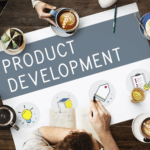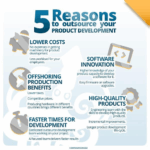Knowing how much it costs to make and sell your product is a game-changer for any business. That’s where product cost analysis comes in. It helps you figure out the full picture—every rupee, dollar, or cent spent along the way. Once you have that picture, you can make smarter pricing and business decisions.
Without this kind of insight, you could be setting prices too high (and scaring off buyers) or too low (and losing out on profit). In this guide, we’ll break down what product cost analysis is, why it matters, and how to do it in a way that works.
Why Bother with Product Cost Analysis?
Product cost analysis is all about understanding where your money goes when making a product. It covers everything from materials and labor to hidden overheads like rent and electricity.
If you don’t track these costs, you might miss the mark on pricing, budgeting, or planning. But if you do know your numbers? That’s where the magic happens—you can set smarter prices, manage expenses, and grow your business with confidence.
Breaking Down Product Costs
Direct Costs: The Obvious Stuff
Direct costs are the costs you can connect to making a product, like the materials, wages for workers, or factory time. If you’re building a table, think wood, nails, paint, and the carpenter’s time.
Knowing these helps you figure out the real cost to make each product. Without it, you could be guessing—and that’s risky.
Indirect Costs: The Behind-the-Scenes Expenses
Indirect costs, or overheads, support your business but aren’t tied to one product. We’re talking about rent, electricity, admin salaries, software tools, and stuff that keeps the lights on.
Even though these aren’t linked to a specific item, they still eat into your profit. That’s why they can’t be ignored when calculating total costs.
Fixed vs. Variable Costs: What Stays vs. What Changes
- Fixed costsstay the same no matter how much you produce (like rent or salaried staff).
- Variable costschange with your output (like materials or hourly labor).
Understanding the balance between fixed and variable costs helps you price better and manage margins more effectively.
Choosing the Right Costing Method
How you calculate product costs depends on what kind of business you run. Here are four common methods:
1. Job Order Costing – Great for Custom Work
If you make one-of-a-kind products (like furniture, custom clothes, or home renovations), this method assigns costs to each unique job.
2. Process Costing – Perfect for Mass Production
Ideal for businesses that churn out large batches of similar products (think food, chemicals, or packaging). It averages costs across all units produced.
3. Activity-Based Costing (ABC) – Super Detailed
This method links costs to each activity in your production process. It’s useful if your operations are complex and you want a clearer picture of where the money goes.
4. Standard Costing – For Predictable Production
You estimate standard costs upfront, then compare them to actual expenses. It’s handy for spotting issues early and managing a consistent process.
How Product Cost Analysis Helps Your Business
How Product Cost Analysis Benefits Your Business
Setting the Right Price
Understanding your product costs is crucial for setting prices that cover expenses and ensure profitability. Recent data from Canada’s manufacturing sector in 2023 revealed that manufacturers spent an average of $0.89 on total expenses for every dollar in total revenue, slightly improving from $0.90 in 2022. This indicates that precise cost analysis can lead to better financial efficiency.
Improving Profit Margins
Effective product cost analysis directly impacts profit margins. For instance, a 2024 report highlighted that B2B manufacturing companies could be losing up to 18.67% of their annual margin due to poor pricing and sales practices. By identifying and addressing these areas through thorough cost analysis, businesses can significantly enhance their profitability.
Controlling Costs
The importance of cost control is evident in various industries. In Pakistan’s textile sector, companies experienced a 64.2% year-over-year decline in net profit during the first quarter of 2024, despite a 22.9% increase in sales revenue. This decline was primarily due to escalating energy costs and raw material prices. Such scenarios underscore the necessity of meticulous cost analysis to identify and mitigate factors that erode profitability.
Planning for the Future
Accurate cost analysis is indispensable for future planning. In Spain, manufacturing prices rose by 2.3% in 2024 after a 6.3% decline in 2023, driven by increased energy costs. This fluctuation highlights the need for businesses to analyze past costs to better predict and prepare for future expenses, ensuring sustainable growth and stability.
How to Do a Product Cost Analysis (Step by Step)
Step 1: List All Your Costs
Start by noting every cost—direct and indirect. Think raw materials, labor, rent, internet, everything.
Step 2: Allocate Indirect Costs
Divide those overhead costs across your products. For example, if your factory rent is $2,000 a month and you make 1,000 units, that’s $2 of rent per product.
Step 3: Calculate Cost Per Unit
Add up all the direct and indirect costs for each product. Now you know exactly what each item costs to make.
Step 4: Check Your Profit Margin
Subtract your cost per unit from your selling price. That’s your margin. If it’s not where you want it, time to adjust.
Step 5: Benchmark with Competitors
Compare your costs with others in your industry. Are you higher, lower, or just right? It gives you context and helps you stay competitive.
Handy Tools to Make It Easier
There are tons of tools that can help with cost analysis:
- For bigger businesses: Software like QuickBooks, Xero, or SAP can automate a lot of the work.
- For smaller setups, Google Sheets or Excel still do a great job if used right.
Watch Out for These Common Challenges
Bad Data = Bad Decisions
If your cost info is outdated or inaccurate, your entire analysis falls apart. Always work with fresh, reliable numbers.
Overhead Allocation Can Get Messy
Splitting rent or utility costs between multiple people can be tricky. Use a method that makes sense, and stick with it.
Predicting the Future Isn’t Easy
Material costs and wages can change fast. Keep reviewing and updating your estimates to stay on track.
Final Thoughts
If you’re serious about building a strong business, product cost analysis isn’t optional—it’s essential. It helps you price right, cut waste, and maximize profits. The more you understand your costs, the better you can steer your business in the right direction.
Want more tips on how to save money and grow your business? Visit BrandNewMD for expert insights on cost control, sourcing, and more.
Also, check out these top picks from BNMD, specially curated to enhance your knowledge.












